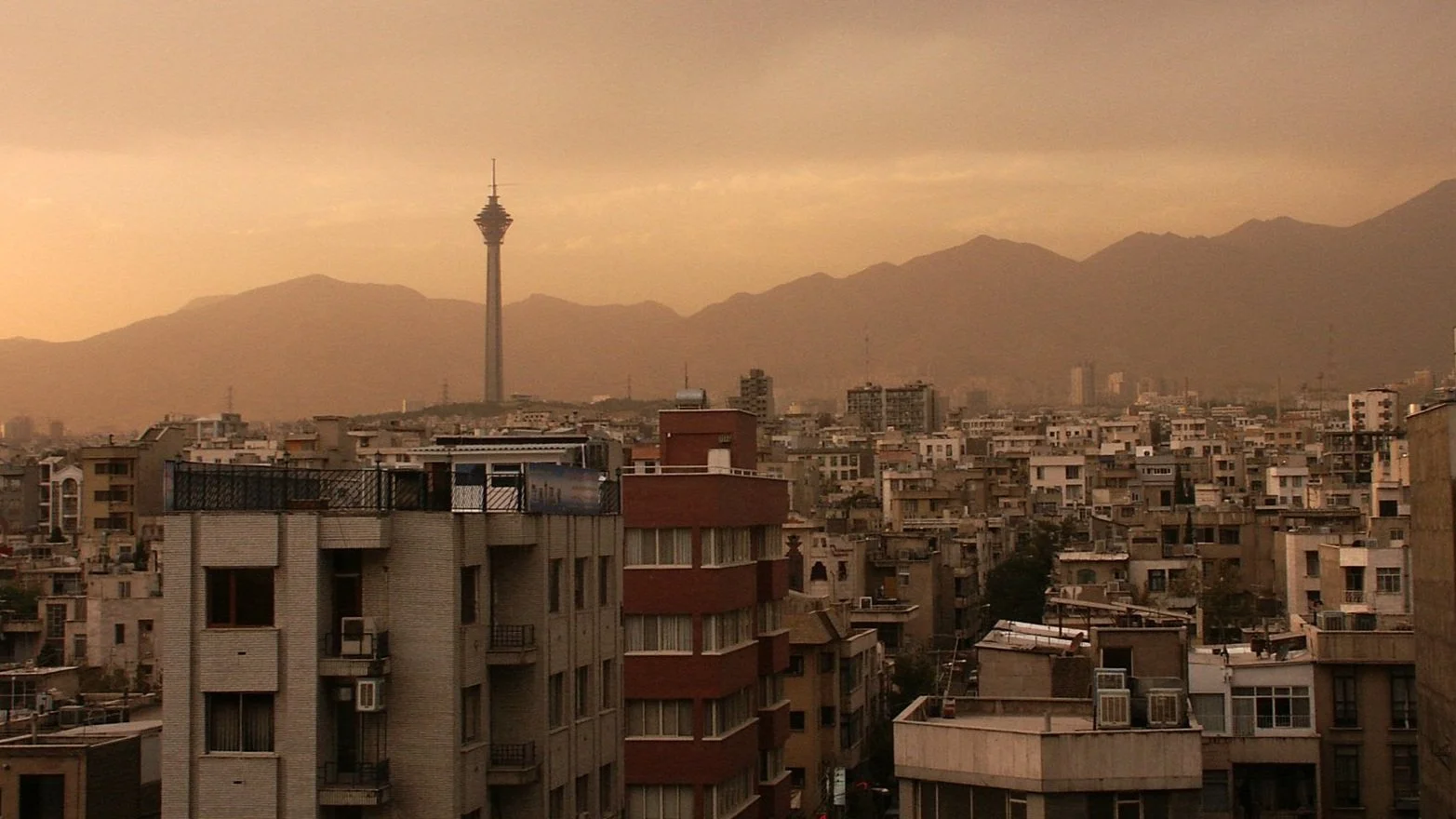Shifting sands: Iran, the Axis of Resistance, and the war in Gaza
The war in Gaza has had deep implications for power dynamics in the Middle East. Iran’s regional power has been particularly impacted with an altering of the so-called ‘Axis of Resistance’, its network of allies across the region—including in Palestine, Lebanon, Iraq, Syria, and Yemen. This has had a considerable impact on Iran’s military capabilities in the current confrontation with Israel. To shed light on these developments, and what they mean for Iran and the balance of power in the region, we spoke with Centre on Armed Groups Fellow, Dr Fatima Moussaoui, a Middle East expert and lecturer at Sciences Po Paris, who explores these dynamics in her recent book, Iran’s Military Power Projection and the Empowerment of Ansar Allah.
The views expressed in Q&As are those of the interviewees and do not necessarily reflect the position of the Centre.
Dr Moussaoui, your new book looks at state formation in Iran, and how it has been intertwined with security ambitions. Could you please give us a brief overview of Iran’s approach to securing its interests in the region since the establishment of the Islamic Republic of Iran following the 1979 revolution?
There are two decisive periods in the formation of the Islamic Republic of Iran. The first was the Iranian Revolution and the rise to power of Ayatollah Khomeini in 1979, at the age of 77. He arrived with a messianic vision of an Islamic state governed under Wilayet e-Faqih, or Guardianship of the Islamic Jurist, a political ideology in Shia Islam that posits that the Muslim community should be led by a qualified Islamic cleric. Khomeini’s aim was to transfer this state ideology and model to the region and neighbouring countries. To justify its policy of expansion, Iran’s approach was to challenge the United States, which, after the fall of the Shah, came to be framed as a powerful enemy that needed to be defeated. Following the evolution of these dynamics, the Iran–Iraq War eventually broke out in 1980, lasting eight years.
The second period began after the Iran–Iraq War, with the transformation of Iran’s defence doctrine and objectives. The policy of exporting the Iranian Revolution model was unofficially abandoned and gradually replaced by a security and defence strategy that sought to expand Iranian influence in the region. Following the 2003 Iraq War, this evolved into a policy of establishing the creation of militias as a means to protect Iran’s national security, something which had never been intentionally planned. What I define in detail in the book is a projection of military power throughout the Middle East. The approach has been to continue designating the United States as an enemy, to be challenged and pushed out of the region with ideological tools on the one hand and strategic pragmatism on the other.
So it seems that Iran’s power projection in the region has been deeply anchored in the Islamic Republic’s religious ideology. Is that what you argue in the book?
What we see as ideology in our understanding of Iran is, for the regime in Tehran, a policy at the service of the Muslim Ummah, the global Islamic community. We must not neglect the value of this narrative and its intentions. This projection of power, although militarily very visible through the ‘Axis of Resistance’, has also aimed to create a popular base beyond Iran’s borders, which is not confined to members of the Shia faith. The religious policies employed by Tehran have made it possible for the regime to constitute narratives in accordance with objectives specific to its messianic message, responding to very specific contexts.
What role have armed groups played in shaping Iran’s regional power, both as proxies and threats?
The regime in Tehran sees proxies as tools of war to be activated, if necessary, in its grand military strategy and doctrine of sacred defence. This doctrine was developed for national security and for political expansion but, above all, it was developed to broaden Iran’s popular influence in the region – to establish parallel economic markets and circumvent Western sanctions. Today, Iran’s leaders remain fully aware that they cannot export Iran’s state model, so their priority is to protect the model at home and address economic difficulties, partly through regional expansion.
‘The regime in Tehran sees proxies as tools of war’
What have been the main impacts of the war in Gaza on Iran’s regional role and interests? How has this shaped Iran’s ability to respond to Israel’s attacks since 13 June 2025?
The war in Gaza has changed the distribution of power in the region, largely diminishing Iranian influence. Today, because a central node in the network has been heavily damaged, the ‘Axis of Resistance’ has lost its coordination capability and become weak. The Axis had been based on, and built around, the structure of Hezbollah and its leader from 1992 until his death in an Israeli airstrike in September 2024, Hassan Nasrallah. Nasrallah acted as the main coordinator at operational and tactical level, and would translate orders from the strategic level – from the Islamic Revolutionary Guard Corps (IRGC) chain of command – to Iran’s various militias and armed group partners on the ground.
Hezbollah’s weakening was compounded by developments in Syria, which today represents the beating heart of the shaping of the new Middle East. The country’s 2011–2024 civil war revealed Iran's ability to recruit, maintain, and transfer military know-how to its proxies and partners. It showed how Tehran shaped the geopolitical balance of power in the region, by placing pawns to delay an offensive, such as the one they are experiencing from Israel today. But, with Bashar al-Assad’s fall in November 2024, Tehran lost yet another pawn. First Hamas, then Hezbollah, and then Assad.
It is important to add that, according to my academic research and to realist theory, the Islamic Republic of Iran should be understood as a weak state, and its regime as being obsolete. Nevertheless, the regime appears to be very resilient, as demonstrated in its current confrontation with Israel. Although Iran does not have the same military capability as Israel and its allies, 10 percent of its counteroffensive missiles have succeeded in penetrating Israel’s ‘Iron Dome’ defence system.
What has the war in Gaza, and Iran’s current confrontation with Israel, meant for Iran’s relationship with the Houthis in Yemen?
We must understand that Tehran, like other regimes in the region, does not want an unstable Middle East. But let's not forget that the Iranians are strategic thinkers, and some degree of controlled instability isn't necessarily bad for their strategic objectives. Controlled instability creates just enough instability to open spaces for engagement, for negotiation, and for influence. The Iran–Houthi relationship has remained strong despite the war, but more importantly, it has allowed the Houthi movement, or Ansar Allah, to restore its image among the regional and global Muslim community, to consolidate its power among the population in northern Yemen, and to gain legitimacy through its support for Gaza. We can’t forget that both the Yemeni population and most Arab populations are pro-Palestinian.
Ultimately, the Houthis are continuing their project to establish a legitimate and functioning state in northern Yemen, managing their narrative according to the geopolitical context, and taking advantage of different opportunities that arise. They will rally to defend Iran because it's in their interest; it is part of their internal and external strategy. I think the Houthis realise that this means they could be next on the list of targets.
In what ways could the Iran–Houthi relationship be affected by the recently announced US–Houthi ceasefire, the current Iran–Israel conflict, and US–Iran negotiations on Iran’s nuclear programme?
I don't think that the US–Houthi ceasefire or US–Iran negotiations on the nuclear programme affect relations between Sanaa and Tehran. The Houthis have already proven themselves as an armed force capable of managing clashes, and have remained resilient despite attacks on their territory by the U.S. and its allies.
In fact, resilience remains a powerful and common refrain between Iran’s and the Houthis’ political and regional doctrines. I think what Tehran has managed to achieve is not just the transfer of military know-how to its partners, but also the transfer of a commitment to resilience through action and fighting for their ideas.
It seems abstract to us, and doesn't speak to the way we see the world but, for them, it makes sense.
Dr Fatima Moussaoui’s book, Iran’s Military Power Projection and the Empowerment of Ansar Allah, was published in April 2025 and is available here.


